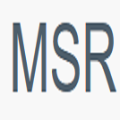Context: The establishment of the Mining Software Repositories (MSR) data showcase conference track has encouraged researchers to provide data sets as a basis for further empirical studies. Objective: Examine the usage of data papers published in the MSR proceedings in terms of use frequency, users, and use purpose. Method: Data track papers were collected from the MSR data showcase track and through the manual inspection of older MSR proceedings. The use of data papers was established through manual citation searching followed by reading the citing studies and dividing them into strong and weak citations. Contrary to weak, strong citations truly use the data set of a data paper. Data papers were then manually clustered based on their content, whereas their strong citations were classified by hand according to the knowledge areas of the Guide to the Software Engineering Body of Knowledge. A survey study on 108 authors and users of data papers provided further insights regarding motivation and effort in data paper production, encouraging and discouraging factors in data set use, and future desired direction regarding data papers. Results: We found that 65% of the data papers have been used in other studies, with a long-tail distribution in the number of strong citations. Weak citations to data papers usually refer to them as an example. MSR data papers are cited in total less than other MSR papers. A considerable number of the strong citations stem from the teams that authored the data papers. Publications providing Version Control System (VCS) primary and derived data are the most frequent data papers and the most often strongly cited ones. Enhanced developer data papers are the least common ones, and the second least frequently strongly cited. Data paper authors tend to gather data in the context of other research. [...]
翻译:方法:数据跟踪文件是从采矿软件储存库数据展示轨道上收集的,通过手工检索和阅读引证研究,将数据文件分为强弱引文,从而建立数据文件。与薄弱相反,强引文真正使用数据文件组作为进一步的经验研究的基础。然后,数据文件根据数据文件的内容手工分类,而数据文件则根据软件工程知识机构指南的知识领域手工分类。关于数据文件的108个作者和用户的一项调查研究就数据文件制作的动机和努力、数据集使用的鼓励和劝阻因素以及今后对数据文件的预期方向提供了进一步见解。结果:我们发现,65%的数据文件在其他研究中使用了数据文件,而数据文件的全文则以其内容为基础,然后根据数据文件内容手工进行分类,而数据大量引用是根据《软件工程知识机构指南》的知识领域手工进行分类的。关于数据文件的108个作者和用户的调查研究研究进一步深入了解了数据组的更多数据。




